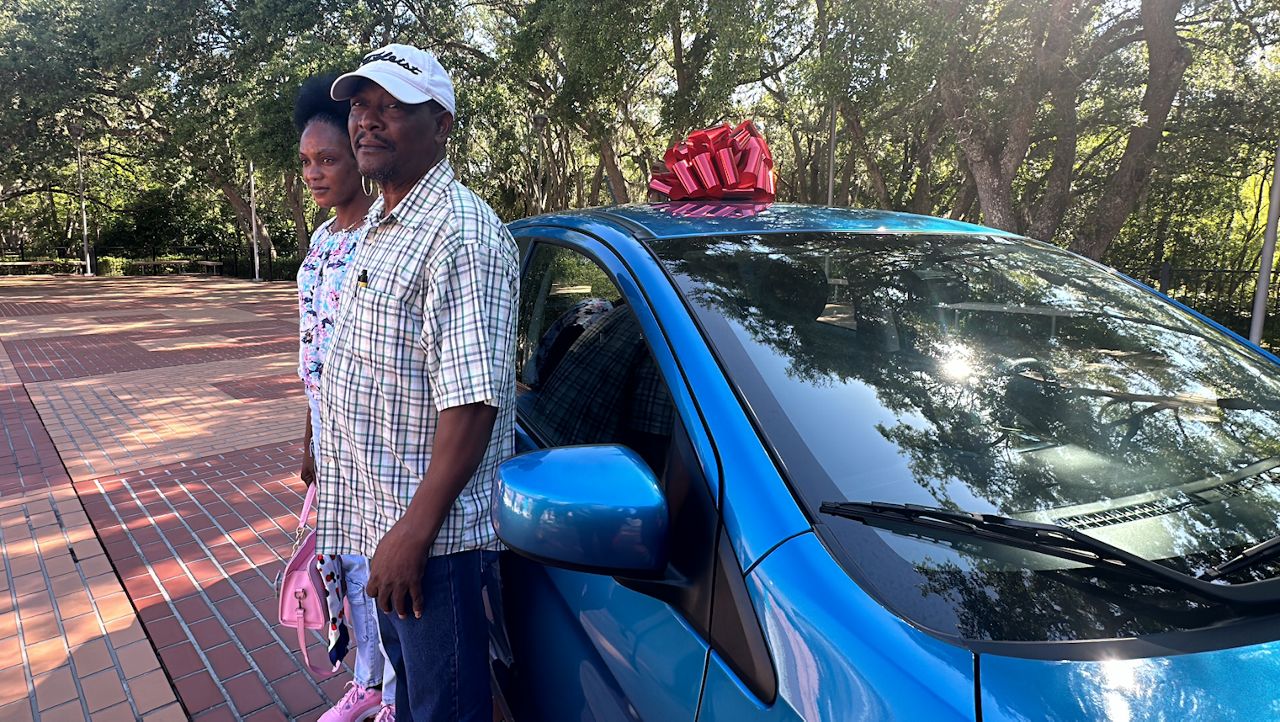HERNANDO COUNTY, Fla. — The Hernando County Sheriff’s Office announced two sets of remains found in Brooksville and Spring Hill more than 30 years ago have been identified, thanks to lab testing that focused on genealogy.
What You Need To Know
- The Hernando County Sheriff’s Office announced two sets of skeletal remains discovered in the early 1990s have been identified
- Remains found in Brooksville in 1990 are those of Robert McReynolds, while those discovered nearly a year later in Spring Hill belong to Richard Sargent
- The sheriff’s office said neither man was reported missing and homicide was not involved in either case
- Genealogical testing helped make the identifications
“We never stop working behind the scenes to identify remains and if a crime can be proven, hold criminals accountable,” Sheriff Al Nienhuis said in a statement.
In both of these most recent cases, the sheriff’s office said homicide was not suspected.
According to authorities, skeletal remains found by a Withlacoochee River Electric employee on November 6, 1990 in the area of Central Road and Commercial Way in Brooksville have been identified as Robert McReynolds.
Almost exactly one year later, on November 3, 1991, another set of skeletal remains were discovered. A hunter came across what have been identified as the remains of Richard Paul Sargent in the area of Osowaw Boulevard between Shoal Line Boulevard and Commercial Way in Spring Hill.
In McReynolds’ case, the sheriff’s office said remains were sent to FBI, FDLE, and University of North Texas laboratories for DNA testing. In 2019, a UNT report showed short tandem repeat (STR) and mitochondrial (MT) DNA profiles were generated.
While they were entered into the Combined DNA Index System, or CODIS, no associations were found. According to information from the U.S. Deptartment of Justice, CODIS is a software program that operates databases from around the country of DNA profiles associated with criminal and missing persons cases.
The sheriff’s office said the remains were sent to Parabon NanoLabs last January.
“It first starts with going back to the biological evidence from that case. We have to start from scratch,” said CeCe Moore, chief genetic genealogist at Parabon.
Moore said Parabon uses advanced DNA analysis that wasn’t traditionally used by law enforcement. It allows scientists to look at a wider swath of the genome — hundreds of thousands of genetic markers instead of around 20.
“If we can find people who share long stretches of identical genetic markers called SNP’s, then we are able to determine that these individuals are relatives with this unknown man,” Moore said.
That information is uploaded to genealogy web sites GEDMatch and Family Tree DNA. Moore said they’re the only direct-to-consumer DNA testing companies that allow law enforcement access. She said while about 40 million people have used DNA testing through larger companies like 23 And Me and Ancestry.com, GEDMatch and Family Tree DNA are smaller sites, allowing Parabon to compare DNA they’ve processed against about two million individuals.
“We get a list of matches, and those are people who share usually pretty small amounts of DNA, but enough DNA that we know they have to be relatives. So, my work starts when I look at that list of matches and I start building their family tree. Based on the amount of DNA they share, I can estimate the relationships and how far back I have to build in their family trees to try to find those common ancestors,” Moore said.
And eventually, identify the remains she’s working with.
“It is especially hard to work cases where the individual we’re trying to identify comes from a population group that is not well-represented in these databases,” said Moore.
That includes Reynolds. He was Black, which Moore said presented other challenges. When exploring African American genealogy, Moore told Spectrum News that researchers run into what she called, “The Genealogical Brick Wall of 1870.” It refers to the fact that, before that year, enslaved individuals were not listed in the census by their names. That makes it tough to complete family trees. Because Reynolds was born in 1927, Moore said she hit that wall quickly.
“What ended up being one of the keys in this case was that I was able to determine that he was actually descended from a slave owner. I was able to build that slave owner’s family tree back to the 1660s, and I found really distant matches that connected all to this one family,” Moore explained.
Moore said she was able to locate Reynolds’ nephew. The Eastpointe Police Department in Michigan helped locate him, and he took custody of Reynolds’ remains.
The sheriff’s office said Sargent’s remains also underwent DNA testing, but only a MT DNA profile was developed, which is not eligible to be entered into CODIS. In February of last year, the remains were sent to laboratories at Othram. The company’s CEO said CODIS isn’t necessarily the tool that will help solve cases like this.
“The traditional DNA testing tool that people use is called STR testing. They’re not designed to help identify unidentified remains. They’re usually designed to track the crimes of repeat criminals that are known,” said Othram CEO David Mittelman.
Mittelman said the technique Othram uses is forensic-grade genome sequencing. According to the company’s website, it was developed by Othram “to break through previously impenetrable forensic DNA barriers and close previously unsolvable cases.”
According to Mittelman, challenges in Sargent’s case included degraded DNA and the presence of non-human material.
“Although these are challenging in general to work with, they’re pretty ordinary for the kind of things that we do, and this case kind of sailed through. It was pretty straightforward,” Mittelman said.
The sheriff’s office said contact was made with Sargent’s family with the help of the Massachusetts State Police and Yarmouth Police Department. Sargent was a Vietnam veteran and the American Red Cross arranged to have his remains shipped to a funeral home in Massachusetts.
Authorities said neither Sargent nor Reynolds were reported missing. Moore said Reynolds had apparently lost contact with his brother, and his nephew was surprised to learn an unidentified “John Doe” was his long-lost uncle.
“I really appreciate the fact that he was willing to step up, embrace this uncle of his that I don’t know if he’d ever even met, and to make sure that he was laid to rest in the way that everybody deserves and that he received that dignity in death,” Moore said.
Mitttelman said there are tens of thousands of unidentified remains in the United States. His message: answers are out there.
“These cases can be solved. If you apply the technology, if there’s funding, if there’s support from the investigators, these cases can be worked. I really hope in the next year or so, this goes from being kind of an extraordinary or unusual event to more of an ordinary process,” Mittelman said.
Moore said those who want to support the work Parabon does can use GEDMatch or Family Tree DNA if they’re planning on taking a direct-to-consumer DNA test.






)


